Business Cancellation Letter Template for Professionals
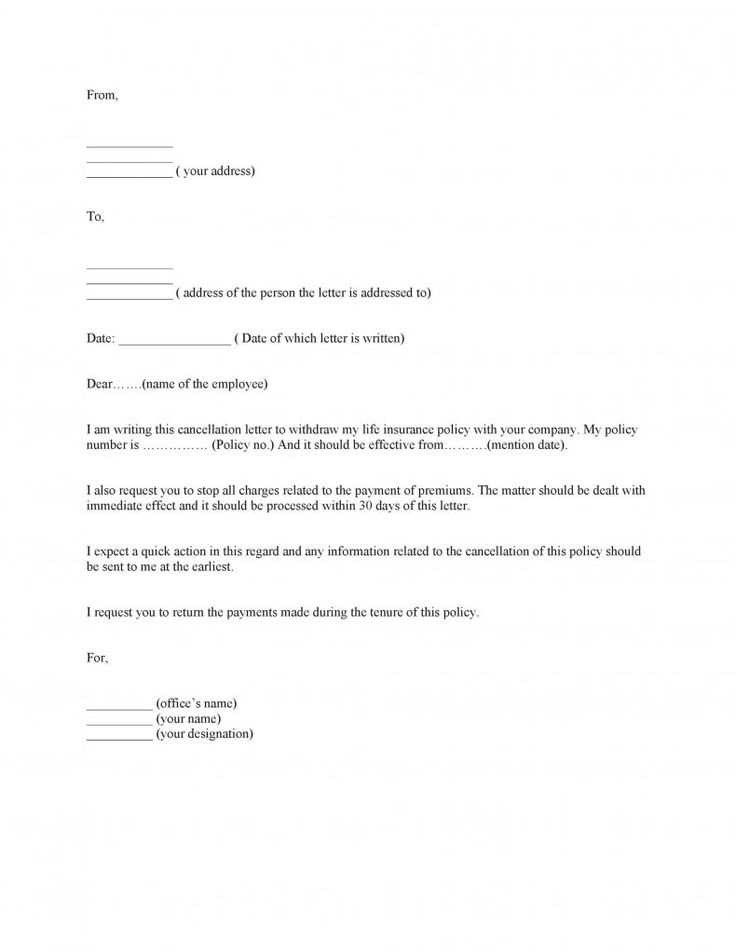
Ending a professional partnership requires careful communication to ensure that both parties are aware of the decision and its implications. It’s crucial to express the intention clearly and respectfully to avoid misunderstandings or potential legal issues. This formal communication should reflect the professionalism of the relationship and protect both parties involved.
Crafting a clear and concise message is essential to convey your decision with the right tone. While it is important to maintain professionalism, the message should also be direct enough to leave no room for ambiguity. Proper phrasing will also help in maintaining a positive or neutral relationship after the conclusion of the agreement.
To make the process smoother, many opt for structured formats that serve as a guide for drafting such communications. These formats ensure that all necessary points are covered while avoiding overly complicated language. By following a standard approach, you can create an effective and legally sound document that aligns with your needs.
Key Elements of a Business Termination Letter
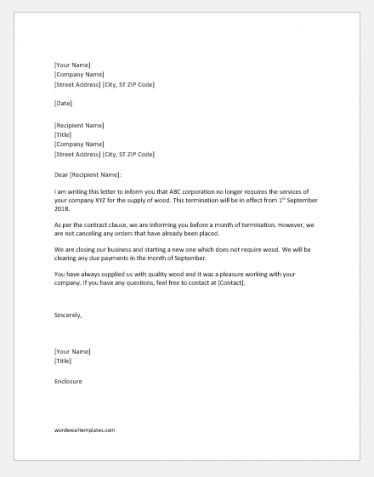
When ending a professional relationship, it is essential to include specific details that ensure clarity and respect. A well-constructed notice serves as both a formal statement and a record of the decision. The content should be straightforward, highlighting key points while remaining neutral in tone to prevent any conflict or confusion.
Essential Information to Include
The first part of the communication should clearly state the intention to end the partnership or agreement. This includes specifying the effective date of termination, so both parties know when the arrangement officially concludes. Additionally, it is important to reference any contractual clauses that support the decision, ensuring that it aligns with previously agreed-upon terms.
Maintaining Professional Tone
While the message needs to be direct, it should avoid any language that could be perceived as confrontational. The tone should remain professional and respectful, acknowledging the efforts of the other party throughout the relationship. This approach helps preserve the integrity of the business interaction and leaves room for future cooperation if needed.
How to Write a Clear Rescission Letter
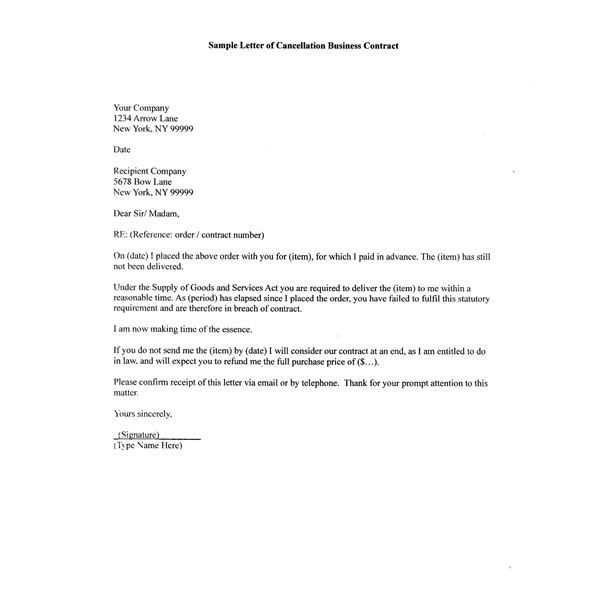
Crafting a clear and concise communication to end a professional arrangement requires precision and clarity. The document should focus on the key points, providing both parties with an understanding of the decision and the necessary steps for its execution. A well-written notice is crucial in ensuring that the process is smooth and without dispute.
Steps to Follow When Writing
- State the Decision Clearly: Begin by clearly indicating that the partnership or agreement is being terminated. This sets the tone for the entire communication.
- Reference Relevant Terms: Mention any clauses in the contract or agreement that support the decision. This reinforces the legal basis for ending the relationship.
- Set the Effective Date: Specify the exact date when the termination will take effect to avoid any confusion regarding timelines.
- Address Future Steps: Outline any actions both parties should take after the termination, such as returning property or completing pending tasks.
Tips for Maintaining a Professional Tone
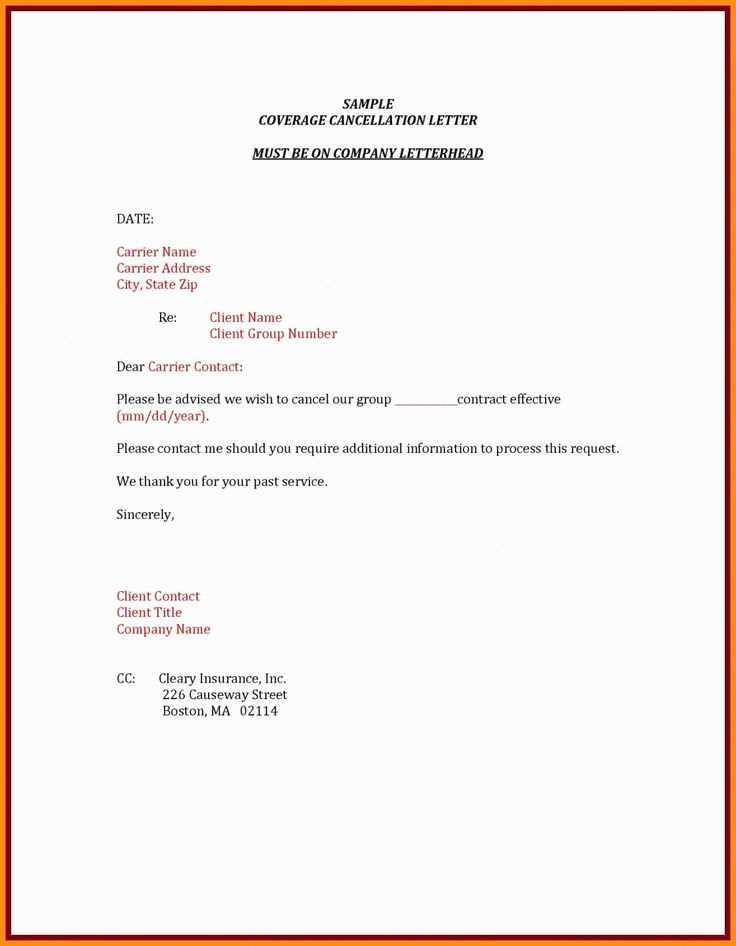
- Keep it Neutral: Use neutral language that avoids assigning blame or pointing out faults.
- Express Gratitude: Acknowledge the positive aspects of the relationship, even when ending it. This ensures the message remains respectful.
- Be Direct but Polite: Ensure that the communication is clear and to the point without being dismissive or impolite.
Legal Considerations for Ending a Contract
When deciding to terminate an agreement, it is important to understand the legal implications involved. Ensuring compliance with the terms of the contract is crucial in avoiding potential disputes or legal challenges. Carefully considering these factors will help protect both parties and ensure that the termination is executed properly.
Reviewing the Agreement
Before taking any action, thoroughly review the contract to identify any clauses related to termination. These sections often outline the specific conditions under which either party may end the agreement and any notice periods required. Failing to adhere to these terms could result in financial penalties or legal complications.
Potential Legal Consequences
It is essential to be aware of the possible consequences of terminating a contract prematurely or without proper cause. In some cases, a breach of contract may lead to damages or compensation claims. Understanding the legal risks involved can help mitigate potential issues and ensure a smoother transition.
Best Practices for Maintaining Professional Tone
When ending a formal relationship or agreement, maintaining a professional tone is essential for preserving the integrity of the interaction. A respectful, clear, and neutral approach ensures that the message is understood without causing offense or creating unnecessary conflict. This section outlines key strategies to ensure that your communication remains professional throughout the process.
Be Clear and Direct
While it’s important to remain polite, clarity is paramount. Make sure that the intention to end the arrangement is clear from the outset. Avoid vague language that could lead to misunderstandings, and stick to the facts to ensure that the recipient understands your position without ambiguity.
Stay Neutral and Respectful
Even if the termination is due to issues or dissatisfaction, it is important to keep the tone neutral. Refrain from assigning blame or using negative language. Instead, focus on the factual aspects of the situation and express appreciation for the work done together. A respectful tone helps preserve relationships and maintain a professional image.
Common Errors to Avoid in Termination Letters
When drafting a formal notice to end an agreement, it’s crucial to avoid certain common mistakes that could lead to confusion or legal complications. Failing to follow the proper structure, or including vague language, can result in misunderstandings and damage the professional relationship. Here, we discuss some of the most frequent errors and how to avoid them.
Frequent Mistakes to Watch Out For
- Lack of Clarity: Be clear about the intent to terminate the arrangement. Ambiguous language can create confusion and delay the process.
- Failure to State the Effective Date: Always specify the exact date when the termination will take effect. This avoids any ambiguity about when the relationship officially ends.
- Ignoring Contractual Terms: Not referring to the relevant clauses in the contract may lead to misunderstandings about the grounds for termination and its legality.
- Overly Negative Tone: Even if the decision to end the relationship is due to issues or dissatisfaction, avoid using harsh or blaming language. Maintain a professional and neutral tone.
- Missing Contact Information: Ensure that your contact details are included, so the other party can reach out if they have any questions or concerns.
How to Prevent These Errors
- Review the Agreement: Before drafting the message, review the original contract to ensure compliance with its terms and conditions.
- Proofread Carefully: Double-check your message for any unclear or vague wording to make sure the communication is straightforward and precise.
- Maintain a Respectful Tone: Focus on keeping the language professional and respectful, even if the termination is due to negative reasons.
When to Issue a Business Cancellation Notice
Determining the right time to formally end an agreement is essential for avoiding unnecessary complications and ensuring that the termination process proceeds smoothly. Timing plays a key role in minimizing potential disruptions and maintaining a professional relationship. In this section, we explore the ideal circumstances for issuing such a formal notice.
Assessing Contractual Obligations
Before taking any action, it’s crucial to evaluate the terms of the agreement. Most contracts will include specific clauses outlining the conditions under which either party can terminate the arrangement. This includes the required notice period, any penalties or fees, and the formal steps needed to finalize the decision. Make sure that all conditions are met before moving forward.
Signs That It’s Time to End the Agreement
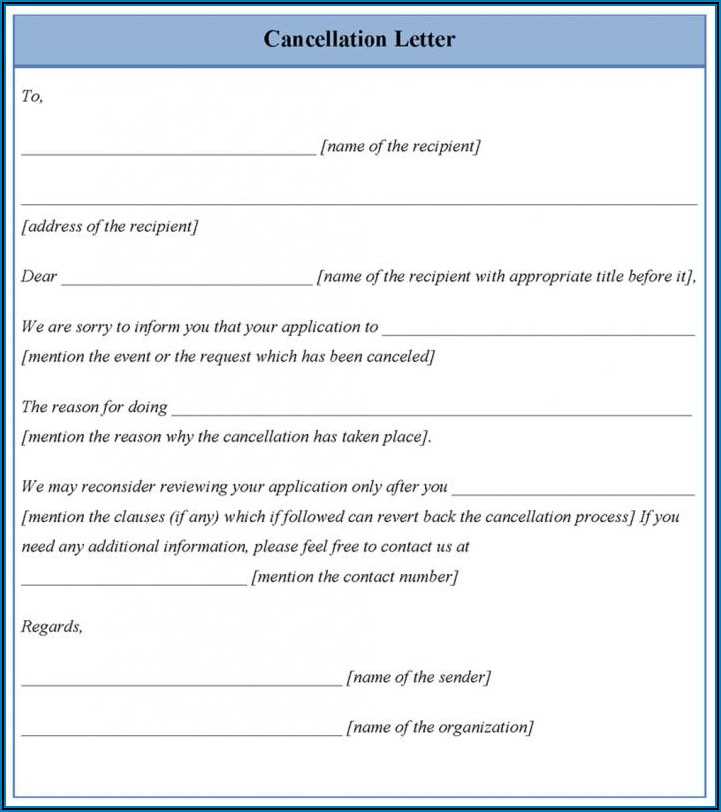
- Failure to Meet Expectations: If the agreed-upon terms are consistently unmet, it might be time to consider ending the relationship.
- Change in Circumstances: Significant shifts in business needs, priorities, or financial conditions can warrant the termination of an agreement.
- Mutual Agreement: Both parties may agree that continuing the arrangement is no longer beneficial, making it a good time to formalize the end.
- Contract Expiration: If the contract is approaching its natural end and no extension is necessary, issuing a termination notice may be the best option.
Sample Templates for Contract Cancellation Letters
Providing examples of properly structured notices can help ensure that the termination process is clear, formal, and legally sound. Below are sample formats that illustrate how to effectively communicate the end of an agreement, ensuring that key details are included while maintaining professionalism.
| Sample Format | Key Elements |
|---|---|
| Basic Termination Notice |
|
| Mutual Agreement Termination |
|
| Immediate Termination Notice |
|